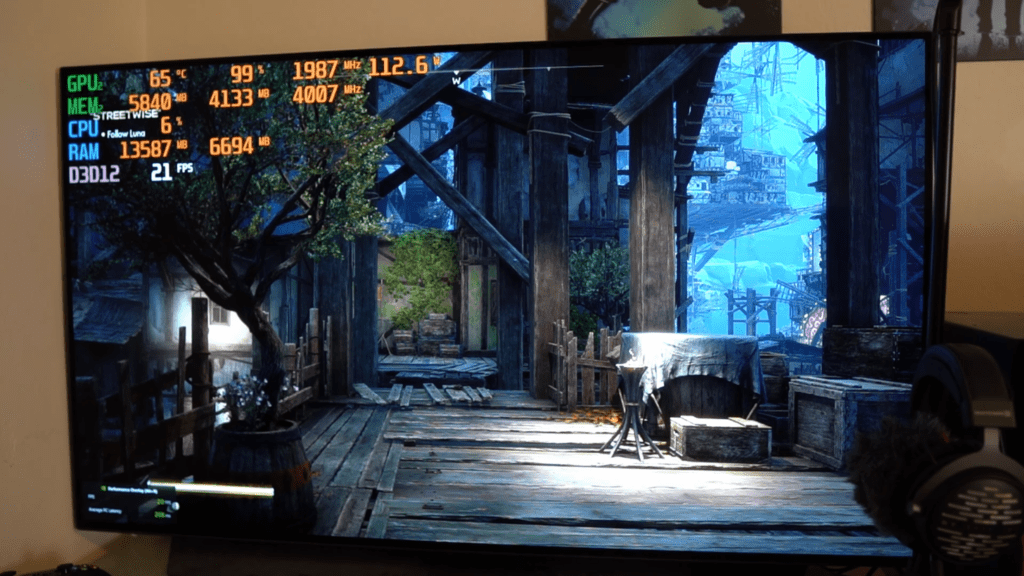The AMD FSR 3 was released just last week and is already being hailed as a significant advancement in the realm of upscaling technology. This is because it brings increased performance to a greater variety of hardware.
Even while it improves frame rates for NVIDIA GeForce 10 graphics processing units equipped with Frame Gen, AMD’s FSR 3 does not deliver an optimal gaming experience.
Using the AMD FSR 3 processor in Forspoken and Immortals of Aveum allowed us to observe significant improvements in terms of overall performance thanks to the AMD FSR 3 and the frame generation functionality it possesses. Despite the fact that there is no AI hardware required to operate the technology, FSR 3 has been shown to deliver greater frames per second (FPS) than its rival, DLSS 3 Frame Gen, with almost identical image quality output at each setting.
This is the case in some situations. This enables AMD FSR 3 on a broad variety of hardware, not only from the AMD camp but also from the NVIDIA camp and the Intel camp. With the impending support, even consoles should be able to take advantage of FSR 3 to its full potential.
Even very ancient GPUs like the NVIDIA GeForce 10 series are supported by the AMD FSR 3 driver. The support is limited to merely upscaling, however Daniel Owens tested older GeForce GTX 1060 and GeForce GTX 1070 cards to see what occurred when FSR 3 Frame Generation was enabled. The support is currently only available for upscaling.
During the course of his tests, he saw that activating FSR 3 Frame Gen did, in fact, result in an increase in the total FPS. When he used the Native AA mode on a GeForce GTX 1060 GPU, he received about 20-22 FPS on average with 200 milliseconds of delay. However, when he activated the frame-gen capability, the FPS increased to 32-34, representing an increase of over 50%, which is fantastic.
NVIDIA GeForce GTX 1060 with Native Anti-Aliasing and AMD FSR 3

NVIDIA GeForce GTX 1060 – AMD FSR 3 Native AA With Frame Gen

When AMD FSR 3 Frame Generation is enabled, it appears that older hardware like the NVIDIA GeForce GTX 10 series can benefit from enhanced frames per second (FPS), despite the fact that this feature is not officially available. However, the gameplay experience will not be very satisfying.
The whole experience was choppy and not smooth at all due to the fact that frame-gen was enabled, which caused the latency to be rather constant at roughly 200 milliseconds. In the meanwhile, switching to FSR 3 Quality mode resulted in a frame rate that was comparable, but with latencies of less than 100 milliseconds, making the game far more playable.
Even though the image quality in FSR 3 Quality mode is lower than in FSR 3 Native AA mode, the whole gaming experience was significantly improved, making it the option that anybody would want to play rather than one with a higher frame rate that was plagued by choppy gameplay.
The same findings were observed with the NVIDIA GeForce GTX 1070, which also noticed an increase in frames per second (FPS) after using FSR 3 Frame Gen. Additionally, it is important to note that NVIDIA Reflex is compatible with FSR 3, but it is not compatible with Frame Gen.
It is possible to employ the Reflex technology to further reduce the game’s latencies in order to make the gameplay more fluid. When frame-gen is turned on with earlier hardware, anti-lag can only be achieved through the use of HYPR-RX. However, AMD Radeon RX 7000 GPUs offer support for anti-lag+ when this feature is turned on.
Because the frame rate isn’t high enough to reap the benefits of the technology, it appears that AMD made the right choice when it decided not to make FSR 3 Frame-Gen available on older systems. It is recommended that you do not enable Frame-Gen on unsupported hardware even if you have the ability to turn it on and off because of how Frame-Gen interacts with V-Sync and the refresh rate of the display.


[…] speculations suggest that NVIDIA is hard at work developing a faster graphics processing unit (GPU) that will be known as the GeForce RTX 4080 Ti. It is speculated that the GeForce RTX 4080 Ti will […]
[…] capabilities of the company. This move was made in order to further enhance the capabilities of AMD’s GPUs. As a result of AMD’s acquisition of Nod.ai, the company will have access to a team comprised […]
[…] Koduri worked at Intel as the principal architect for standalone graphics processing units (GPUs), where he focused on visuals and technological developments. His work included artificial […]